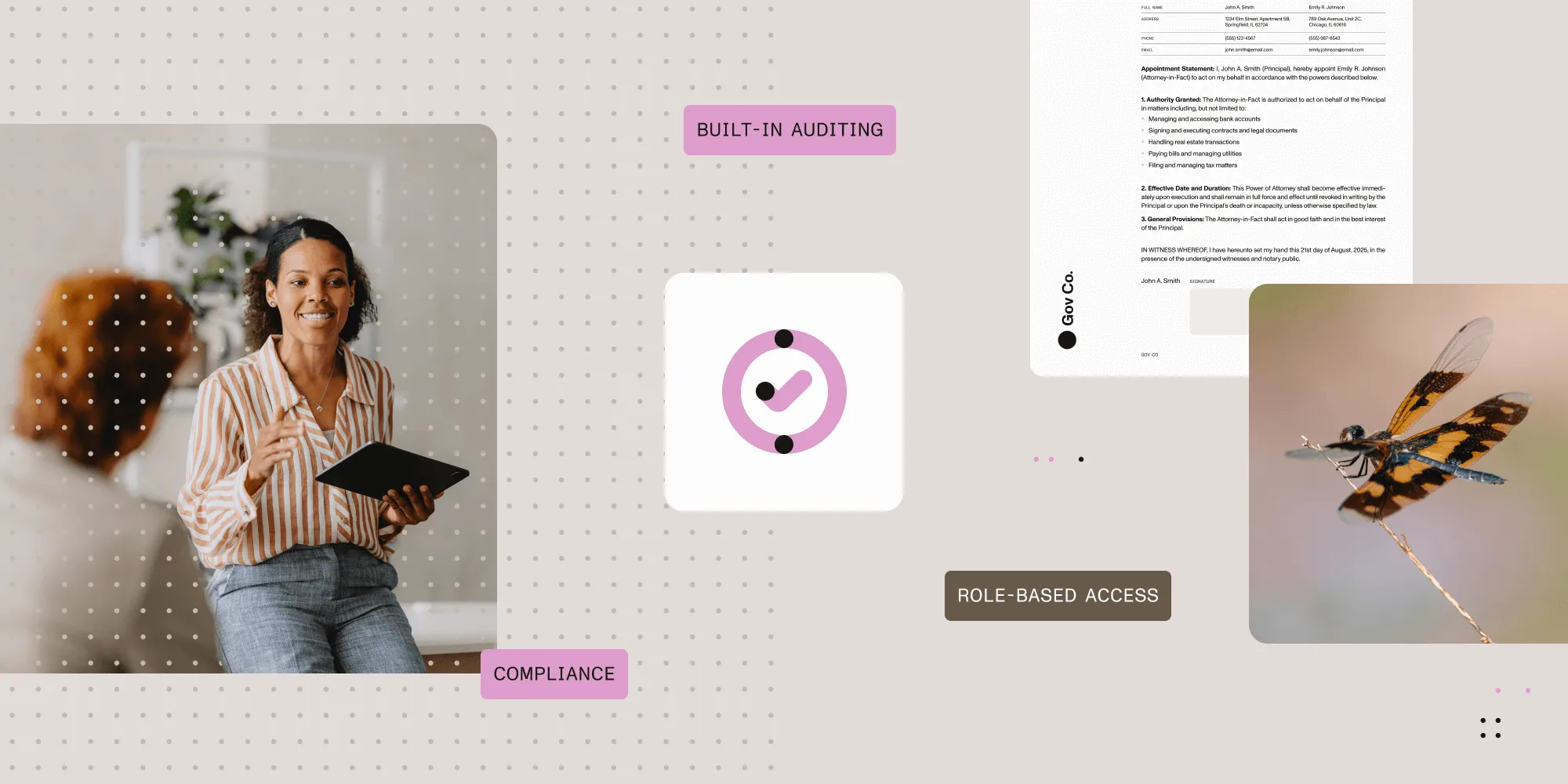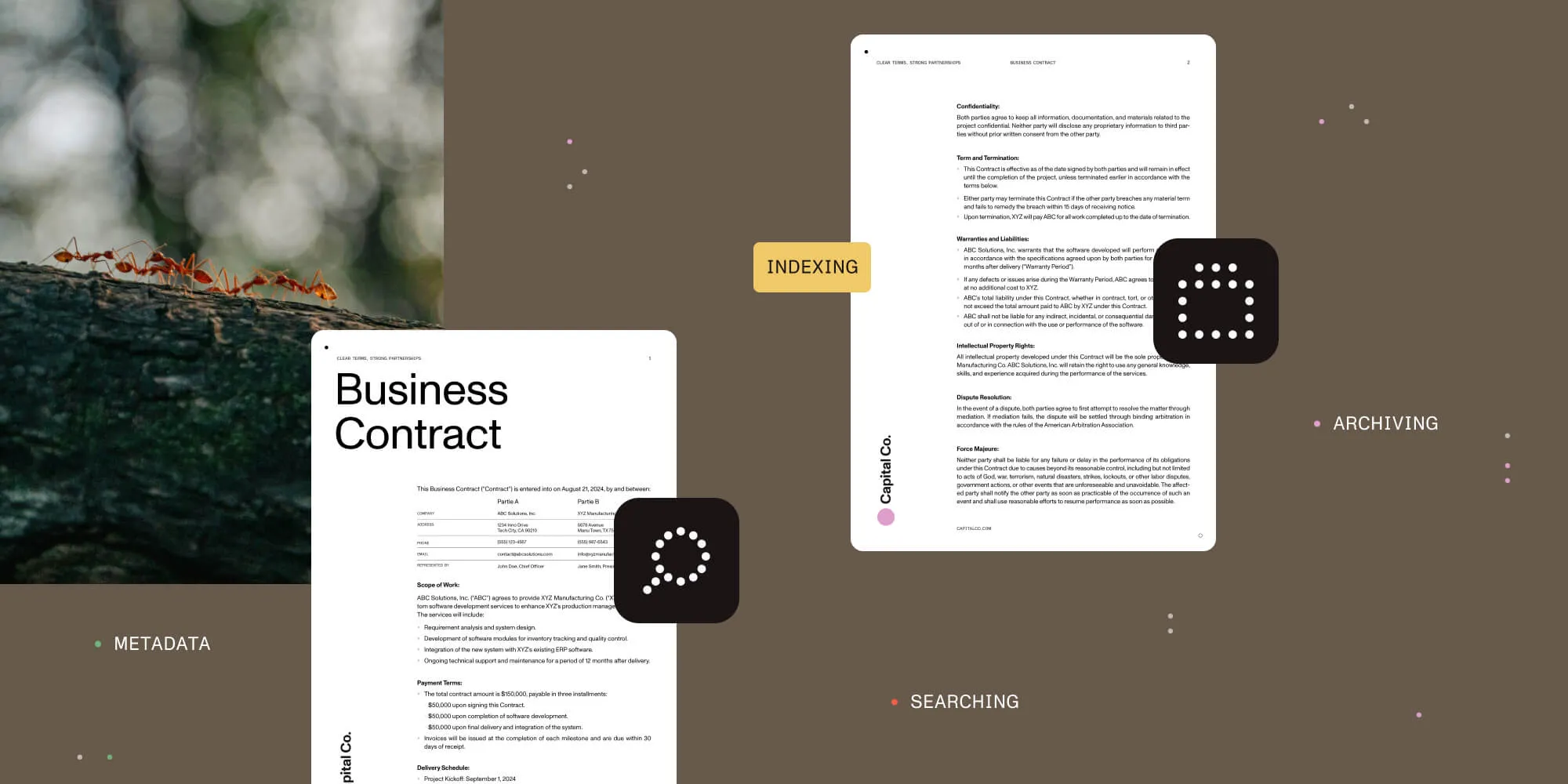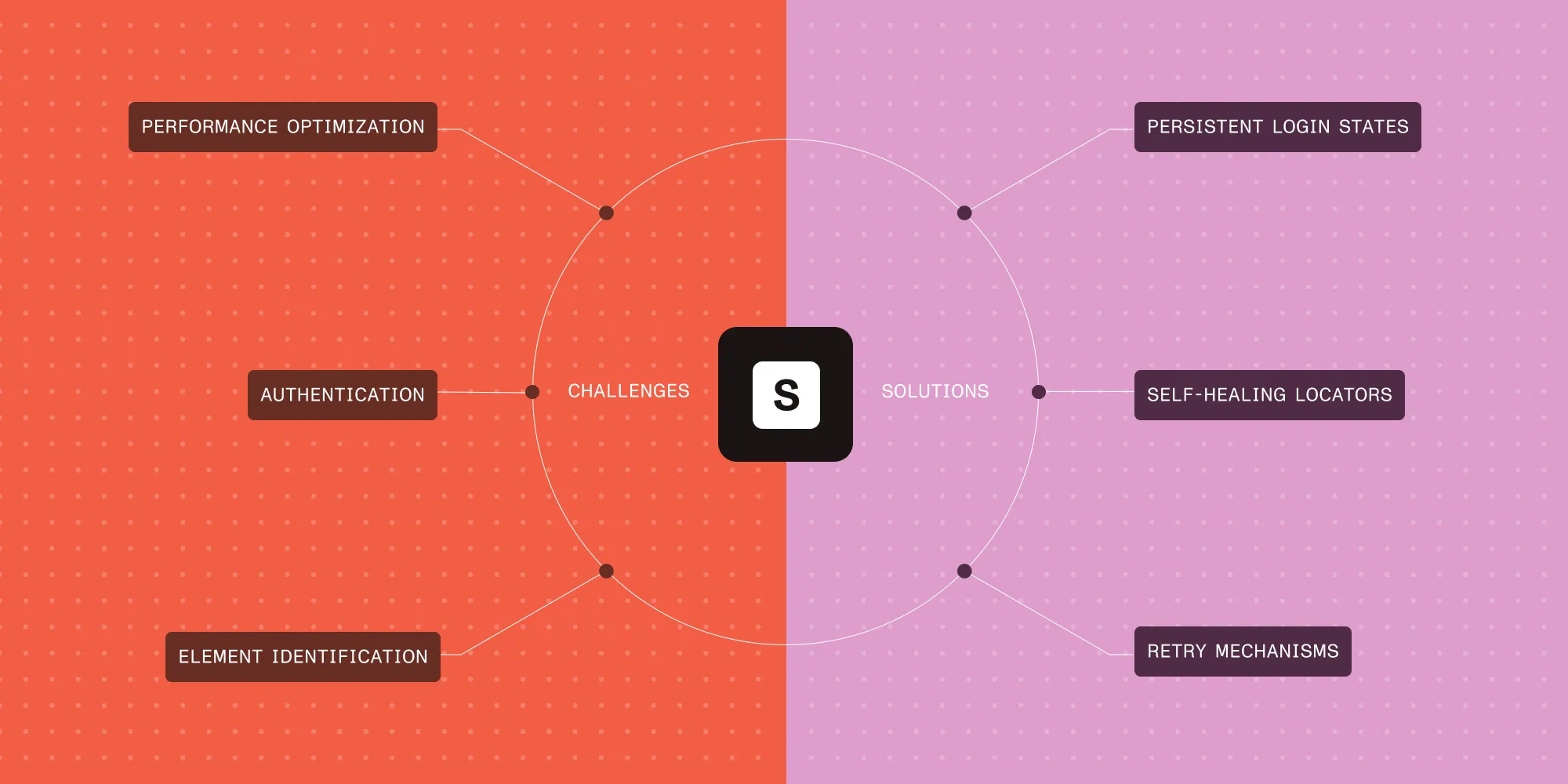Low-code governance: A comprehensive guide for enterprises
Table of contents

As low-code platforms like Microsoft Power Platform and Nutrient gain traction across enterprises, governance has become the backbone of sustainable digital transformation. With rapid app creation and process automation, the risk of security gaps, data sprawl, and compliance violations increases unless managed through a clear and structured governance model.
This guide outlines how to build that model, while introducing tools and solutions that are designed with governance and compliance at their core.
What is low-code governance?
Low-code governance is the discipline of managing and overseeing low-code app development. It covers everything from platform access, lifecycle policies, and compliance to versioning and security controls.
Done right, it empowers both citizen developers and IT professionals to build with confidence, knowing that apps will be secure, scalable, and supportable.
Nutrient supports governance by providing:
- Compliance with SOC 2, GDPR, and government cloud requirements
- Secure, non-persistent data handling
- Role-based access and reusable assets
- On-premises installable applications for strict data control
- Built-in auditing and logging
Points covered in this guide:
- What do we mean by low-code governance?
- Regulatory compliance
- Extending compliance in government clouds
- Quality and reusability
- Access management
- Installable products for on-premises or private cloud environments
- Extending compliance in government clouds
- Steps to effective low-code governance
What do we mean by low-code governance?
When implemented effectively, low-code governance enables both citizen developers and IT teams to create applications confidently, with the assurance that they’ll be secure, scalable, and easy to maintain.
Low-code solutions often interact with critical data systems, making robust security governance non-negotiable. Governance ensures that:
- Proper authentication mechanisms are enforced.
- Encryption protocols protect data in transit and at rest.
- Secure data access is maintained, especially when leveraging Power Automate connectors or external APIs.
For example, when using Nutrient Document Converter for SharePoint Online, or when integrating via Power Automate or custom software that calls the REST API directly, Nutrient servers never access customer environments. Instead, all the data — including the file to be processed — is transmitted to our servers as part of the request. The processed results are returned immediately, with no files ever stored. Any temporary data is completely erased after processing, ensuring zero data persistence. For more information, refer to our knowledge base.
This architecture ensures zero data persistence and provides peace of mind for organizations concerned with data privacy and sovereignty, especially when operating in regulated industries.
Regulatory compliance
Governance plays a vital role in ensuring low-code solutions align with industry regulations and organizational policies. This includes adherence to standards like SOC 2, supported by platforms such as Nutrient Workflow, which offers built-in audit trails, role-based access controls, and activity logging.
For global compliance, governance also enforces data residency and retention rules, such as those required under GDPR. Nutrient allows organizations to choose their preferred data center location, ensuring sensitive data remains within required jurisdictions.
Additionally, government-ready hosting options are available with Nutrient Workflow, an ideal choice for public sector organizations and highly regulated industries that demand the highest levels of security and compliance.
Quality and reusability
Low-code platforms empower rapid development, but without governance, that speed can result in inconsistent applications, duplicated effort, and maintenance headaches.
A governance-first approach promotes reusability and quality assurance through:
- Workflow templates — Prebuilt, standardized templates act as blueprints for automation. They help teams get started quickly while staying aligned with security and compliance requirements.
- Explore Nutrient Workflow templates for structured, enterprise-ready solutions that are easy to implement and adapt.
- Microsoft also offers Power Automate templates(opens in a new tab), which simplify automation with preconfigured flows for common use cases.
- Reusable components and connectors — Packaging business logic, UI controls, and connector configurations encourages consistent experiences across apps and reduces redundancy.
- Approval workflows — Governance ensures all flows and apps go through internal review, enforcing design standards, validating security policies, and improving user trust.
Without governance, each team may build their own version of the same workflow, leading to waste, version control chaos, and potential compliance risks.
Access management
Effective governance starts with controlling who can build and deploy apps. Use role-based access controls (RBAC) to define clear responsibilities:
- Makers — Build apps within approved environments
- Reviewers — Validate logic, usability, and compliance
- Admins — Enforce policies and manage environments
Combine this with:
- Security trimming to ensure users only access what they’re authorized to
- DLP policies to prevent sensitive data from flowing to unapproved connectors or destinations
Platforms like Power Platform and Nutrient Workflow offer built-in tools to manage access securely and at scale, keeping innovation safe and compliant.
Installable products for on-premises or private cloud environments
For organizations that require full control of infrastructure, Nutrient offers installable solutions that run entirely within the customer’s network.
Document Searchability
Document Searchability enhances how organizations manage large volumes of unstructured documents. It features:
- An OCR and text extraction engine that makes scanned PDFs searchable
- The ability to run locally, which is ideal for secure, high-volume document ingestion and processing
- Native integration with SharePoint and file systems
Document Automation Server
Document Automation Server is a powerful backend designed to handle complex document workflows at scale. It is:
- A robust automation backend that supports conversion, splitting, merging, redaction, and metadata extraction
- Perfect for batch processing documents via Power Automate, Logic apps, or REST APIs
- Capable of being deployed behind your firewall for maximum data sovereignty
Document Editor
One of the standout tools in Nutrient’s suite is Document Editor, which redefines PDF collaboration in Microsoft 365. With Document Editor, files never leave SharePoint, providing the ability to collaborate on PDFs in SharePoint by viewing, annotating, and editing directly within the platform. Facilitate multi-user review by adding comments, highlights, and annotations — all without ever losing the security, permissions, or versioning controls of SharePoint.
With this, teams can:
- Review contracts, legal documents, or blueprints directly in the browser
- Avoid the overhead of checkouts and manual downloads
- Retain 100 percent control over file location and access
This is essential for government, healthcare, and finance sectors, where external cloud routing of documents isn’t allowed.
Extending compliance in government clouds
In highly regulated environments like Azure Government Cloud for Power Automate Connector, commercial connectors may not be available. A practical workaround for using Azure Functions with OpenAPI is detailed here(opens in a new tab).
This allows organizations to:
- Expose secure, custom APIs from within their environment
- Integrate tools like Power Automate without breaking compliance
- Keep all data processing within government-certified infrastructure
It’s an ideal approach when working with platforms like Nutrient, where strict data residency and control are required.
Steps to effective low-code governance
Effective low-code governance isn’t just about setting rules — it’s about creating a framework that supports rapid innovation without compromising on security, compliance, or quality. By putting the right structures, tools, and teams in place, organizations can scale low-code development confidently across departments while maintaining full oversight. The steps below outline a practical roadmap to help enterprises govern low-code platforms responsibly and efficiently.
- Establish a fusion team — Blend IT, business, and compliance to co-manage platform usage.
- Choose tools with built-in governance — Use platforms like Nutrient and Power Platform, which offer RBAC, monitoring, and logging out of the box.
- Segment environments — Separate development, testing, and production environments, and restrict access with role policies.
- Apply DLP and conditional access — Ensure secure data usage by controlling connectors and app behaviors.
- Standardize templates and reusables — Share approved templates and custom components for reuse.
- Automate testing and deployment — Use DevOps tools or native pipelines for safe and consistent releases.
- Audit and log everything — Maintain visibility through centralized logs, metrics, and exception handling.
- Train and enable citizen developers — Provide governance-aligned resources, workshops, and self-service guidance.
- Host where needed — For sensitive workloads, deploy installable products in your own datacenter with SOC 2 compliance and government hosting options.
Low-code governance is about empowering innovation responsibly. When equipped with the right tools — like Nutrient’s installable server products, Power Automate connectors, and SharePoint-integrated document workflows — you can support digital agility while maintaining the controls your organization requires.
Whether you’re operating in a government, healthcare, or enterprise context, a governance-first approach ensures low-code doesn’t become low-control.
Ready to get started?
Book a call to discuss how Nutrient can help your project stay compliant without slowing innovation. Whether you’re in healthcare, government, or the enterprise space, we’ll help you implement a governance-first approach that empowers citizen developers and satisfies compliance stakeholders.







